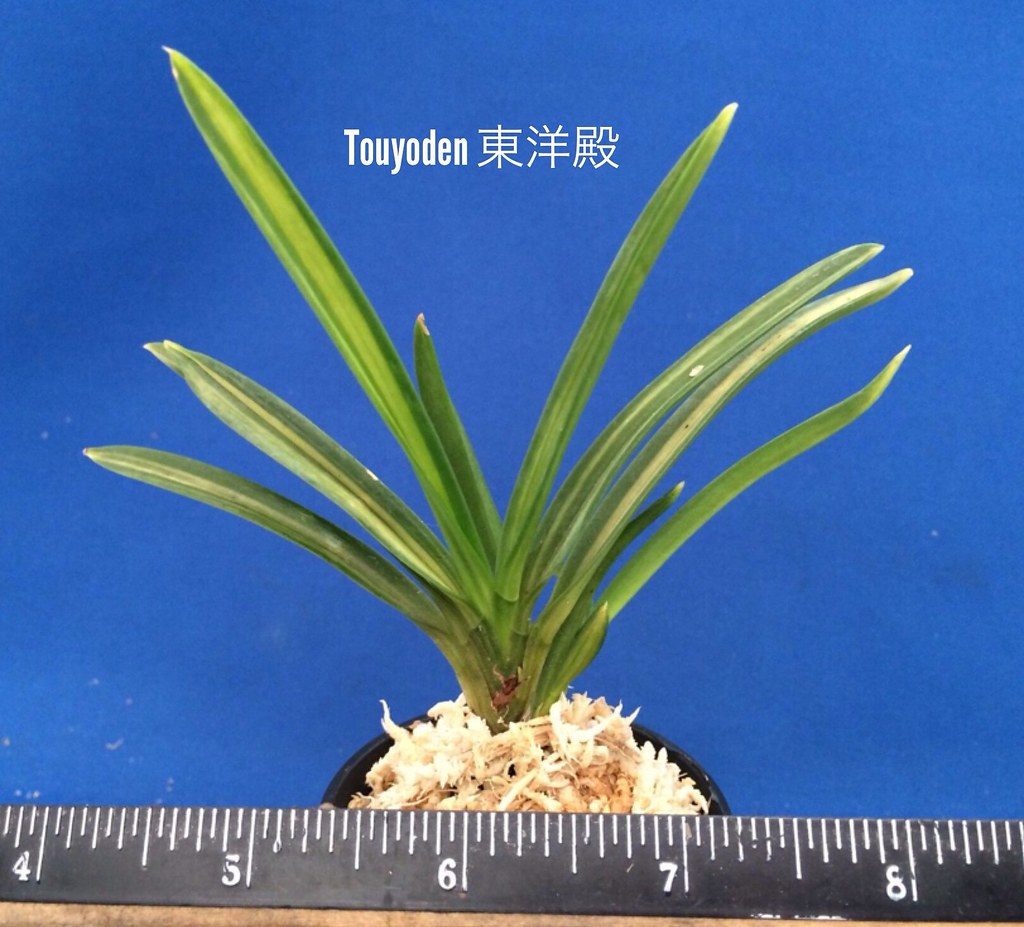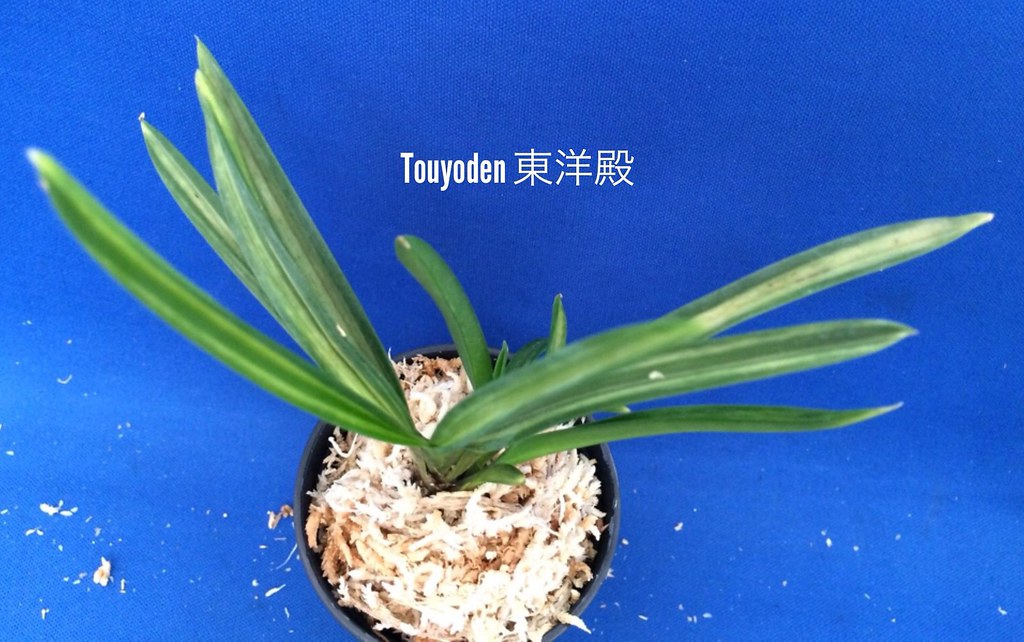


Donate Now
and become
Forum Supporter.

Many perks!
<...more...>


|

02-02-2014, 01:00 PM
|
|
Senior Member
|
|
Join Date: Aug 2010
Zone: 6a
Location: Boston, MA
Posts: 886
|
|
Oh, don't stop, Kristen. Biology talk is great. 
Maybe you can find the Shishido Sedirea japonica perfume while you are in Nihon, or little samples of it. |
|
Post Thanks / Like - 1 Likes
|
|
|
|
|

02-02-2014, 01:12 PM
|
|
Senior Member
|
|
Join Date: Aug 2009
Zone: 6a
Location: Mountain Home, Idaho
Age: 58
Posts: 3,387
|
|
Quote:
Originally Posted by rangiku

Oh, don't stop, Kristen. Biology talk is great.  |
My thoughts exactly... |
|
Post Thanks / Like - 1 Likes
|
|
|
|
|

02-03-2014, 02:09 PM
|
|
Senior Member
|
|
Join Date: Jun 2009
Zone: 6a
Location: Pennsylvania
Age: 29
Posts: 6,061
|
|
Quote:
Originally Posted by dries666

according to SE Nishidemiyako has another mutation (or they call it variation... but that seems quite the same to me?) called Tamanishiki 玉錦
I also found another one called Saikaku 西鶴, but I don't seem to find very much information about this particular variation. This one popped up on SE facebook picture page with the description that it's also a nishidemiyako mutation... maybe because of the yellow stripes??
I am really not so sure about these mutations so is there anybody who knows more about these particular ones?
greetz,
Dries
|
Thanks for posting those! I'll see if I can find some photos and add them to the original post!
Quote:
Originally Posted by trdyl

My thoughts exactly...
|
Don't stop Kristen! Bring on the bio-talk! |

02-04-2014, 07:11 PM
|
|
Senior Member
|
|
Join Date: Jun 2009
Zone: 6a
Location: Pennsylvania
Age: 29
Posts: 6,061
|
|
Check out this fan on my Nishidemiyako, looks like it might be changing to Manazaru.


Ps. this thread is not a sticky  |

03-15-2014, 04:02 AM
|
|
Senior Member
|
|
Join Date: Apr 2013
Zone: 5a
Location: Fort Wayne, Indiana
Posts: 2,727
|
|
 List of mutations in Neofinetia-with pictures
List of mutations in Neofinetia-with pictures
Picking up the conversation...here is a Touyoden 東洋殿. SE describes this plant as "TOUYODEN produce spread striped variegation called Chiri-fu*. when this stripe become inner stripe, it would be called AKEBONO."
A picture:
 Touyoden 東洋殿
Touyoden 東洋殿 by MattWoelfsen, on Flickr
And another:
 Touyoden 東洋殿
Touyoden 東洋殿 by MattWoelfsen, on Flickr
I am hoping that a little more light will make the stripes brighter.
Last edited by MattWoelfsen; 03-15-2014 at 04:07 AM..
|

03-21-2014, 08:18 PM
|
|
Senior Member
|
|
Join Date: Oct 2012
Zone: 10b
Location: Ft Lauderdale, FL
Age: 43
Posts: 145
|
|
 unknown variants
unknown variants
Here is my higashidemiyako, similar to nishidemiyako since both are basically from Kyoto. I am not sure it can still be called that type because I don't know a lot about neos. I just know that when I bought it that it was the least expensive one.
It has changed considerably from a solid cream colored margin to the Chiri-fu type just mentioned, but that is only the mother plant!
The two other fans look different. One has firmly established itself as half without green, yet still capable of producing anthocyanins and it looks like it is starting to send up a bloom spike. The other seems unstable, but could also have gone the way of the chiri-fu.
If anyone knows what is going on here I'd love to hear it.
Last edited by gravotrope; 04-09-2014 at 05:26 PM..
Reason: Better photos
|

05-01-2014, 02:07 AM
|
|
Senior Member
|
|
Join Date: May 2014
Location: Toronto
Posts: 878
|
|
Hello fellow Neophytes, I was casually reading neo forums and ran into this... So I wanted to post the MIKADO that I bought from Glen 3 years ago or so  |

05-01-2014, 06:38 AM
|
|
Senior Member
|
|
Join Date: Apr 2013
Zone: 5a
Location: Fort Wayne, Indiana
Posts: 2,727
|
|
 List of mutations in Neofinetia-with pictures
List of mutations in Neofinetia-with pictures
Thank you for posting pictures of your Mikado. The subtle stripping is lovely.
|

05-02-2014, 03:30 AM
|
|
Senior Member
|
|
Join Date: May 2014
Location: Toronto
Posts: 878
|
|

Hi Matt, was my pleasure to post the pic of the Mikado that people were talking about from Glenn...
I have been growing neos for about 10 years now and have amassed about 200 plants of all types... from Glenn and even from my trips to Japan ... the plants give such pleaure and peace to me...
Also, some comments on the rest of the post... a mutation is inherent in some plants and certain varieties like the nishidemiyako will always have the potential to mutate to manazuru, ginsekai, ookan saikaku, tamanishiki or tamazuru. That is why that plant is highly prized by many in Japan to grow as it is a reasonable priced variety that can mutate to expensive varieties. Nishi's go for about $25 per growth but a saikaku is about $1000/growth! The rate of mutation is about every 3-8th growth, or sometimes never. Some mother plants of nishi's will mutate more readily than others. I have one that mutates to manazuru every 3rd growth... you can tell it is a manazuru if that growth throws a ruby root. Once a new mutation shows up we usually separate them when they have 4-6 fans of leaves and hope they stabilize as that mutation. Sometimes they will revert back to the original mother plant. If they stabilized then kaboom, you have a nice variety to grow to maturity!
The whole point of the named varieties are that they are stable for their type. Fukurins (marginal stripes) are valued for that trait and so on... if a plant changes courses in an odd event (such as from selfings) it may or may not be advantages, depending on what it turns to ... if it turns to something more valuable, then great ... but if the new mutation destroys the original variety (such as a striped shima turned to only green leaves) then the plant lowers in value...
Most new mutations we see in the market are breeding from Korea and are selected by specialists like Seed Engei to proliferate and register... for example the triple spurred manjushage was from a batch of seedling from the normal Amami furans... you can see mine in the FB link below
https://www.facebook.com/pages/Japan...18720534853007
hope my 2 cents worth helps a bit to explain the mutation of these amazing plants!!

|

08-30-2014, 11:58 PM
|
|
Senior Member
|
|
Join Date: Oct 2012
Zone: 10b
Location: Ft Lauderdale, FL
Age: 43
Posts: 145
|
|
Yes that is a lot of great information.
Here is the update on my higashidemiyako, which also have a similar set of variations as nishidemiyako, I just don't know if they have the same name. It is supposedly, if what I've read is correct, not supposed to mutate as often as the nishi variety.
|
|
Post Thanks / Like - 1 Likes
|
|
|
|
|
|
Currently Active Users Viewing This Thread: 1 (0 members and 1 guests)
|
|
|
 Posting Rules
Posting Rules
|
You may not post new threads
You may not post replies
You may not post attachments
You may not edit your posts
HTML code is Off
|
|
|
All times are GMT -4. The time now is 02:23 PM.
|





































 Linear Mode
Linear Mode


